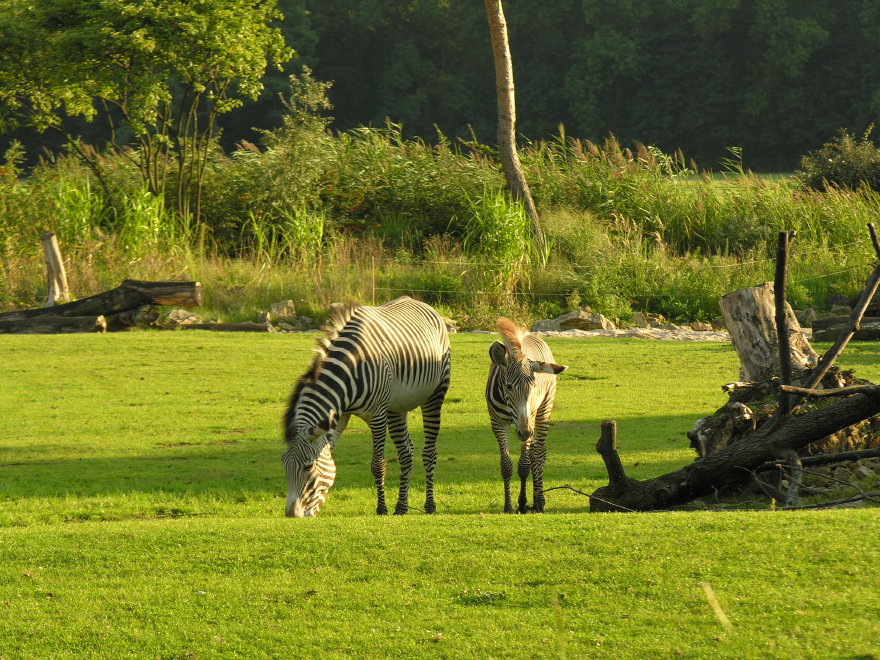Free Photo: A young Zebra with it's Mother at the Leipzig Zoo, Germany
[Previous Page | Index | Next Page]

18leipzigzoo.jpg
A young Zebra grazes with it's mother on the Kiwara Savannah at the Leipzig Zoo.
No animal has a more distinctive coat than the zebra. Each animal's stripes are as unique as fingerprints—no two are exactly alike—although each of the three species has its own general pattern.
Why do zebras have stripes at all? Scientists aren't sure, but many theories center on their utility as some form of camouflage. The patterns may make it difficult for predators to identify a single animal from a running herd and distort distance at dawn and dusk. Or they may dissuade insects that recognize only large areas of single-colored fur or act as a kind of natural sunscreen. Because of their uniqueness, stripes may also help zebras recognize one another.
Zebras are social animals that spend time in herds. They graze together, primarily on grass, and even groom one another.
Plains (Burchell's) zebras are the most common species. They live in small family groups consisting of a male (stallion), several females, and their young. These units may combine with others to form awe-inspiring herds thousands of head strong, but family members will remain close within the herd.
Zebras must be constantly wary of lions and hyenas. A herd has many eyes alert to danger. If an animal is attacked, its family will come to its defense, circling the wounded zebra and attempting to drive off predators. (source: http://animals.nationalgeographic.com/animals/mammals/zebra.html)
[Previous Page | Index | Next Page]
This page last updated January 2015
Visit http://www.TechnologySite.org for free
photos and lists of inventions and technology. Visit http://www.ClimateChangeFacts.info for unbiased
information about climate change. Visit http://www.ClimateCooling.org for eye-opening
biased information on global cooling and climate change and visit http://www.OceanAssoc.com for fisheries
and oceans consulting services.